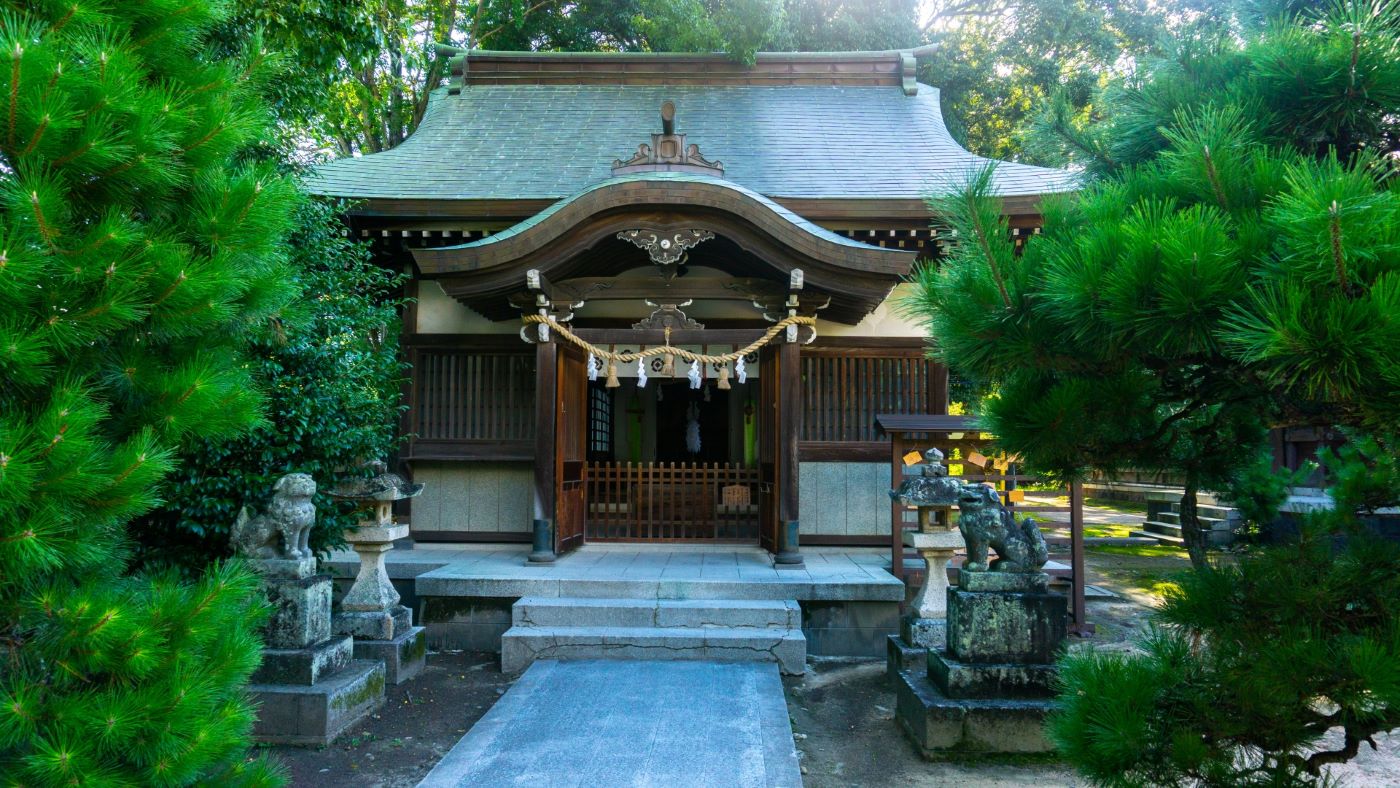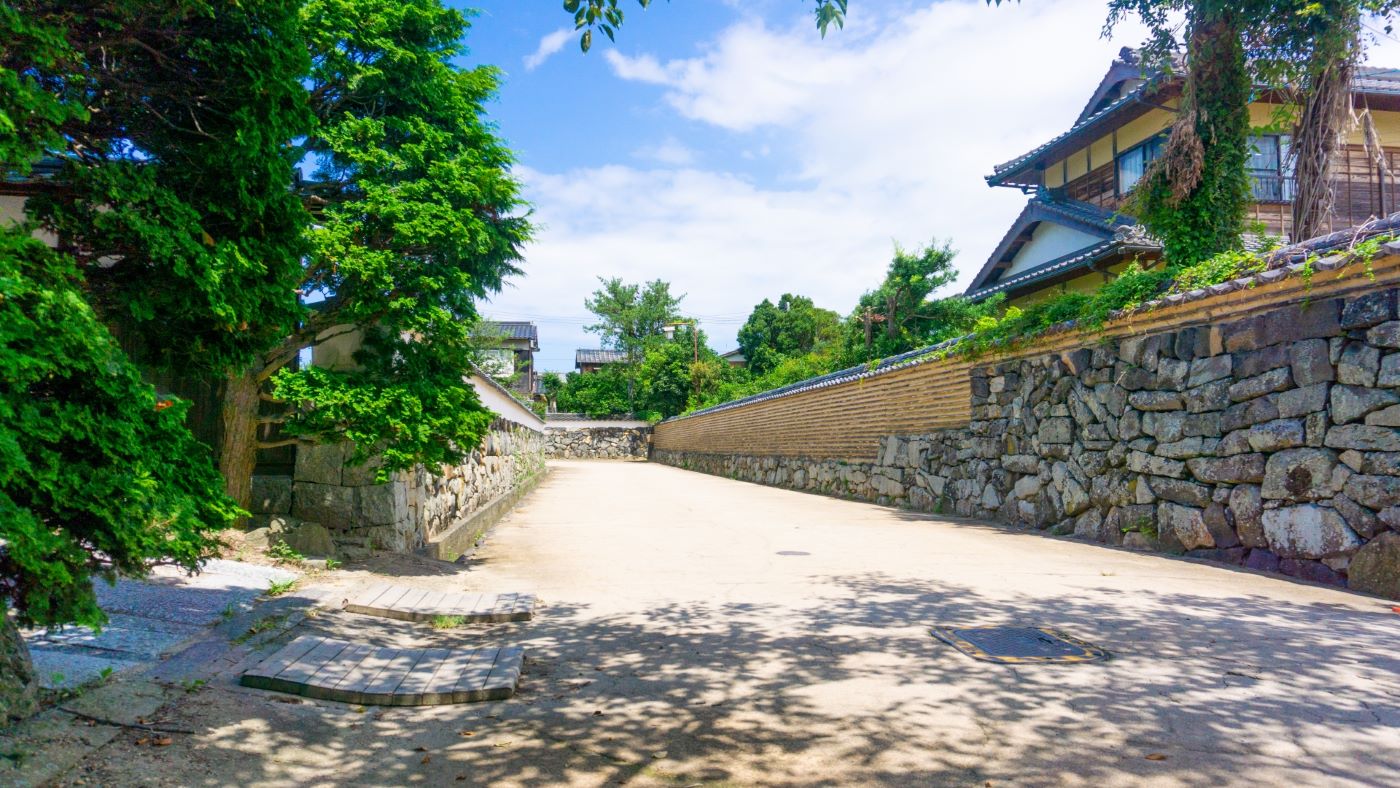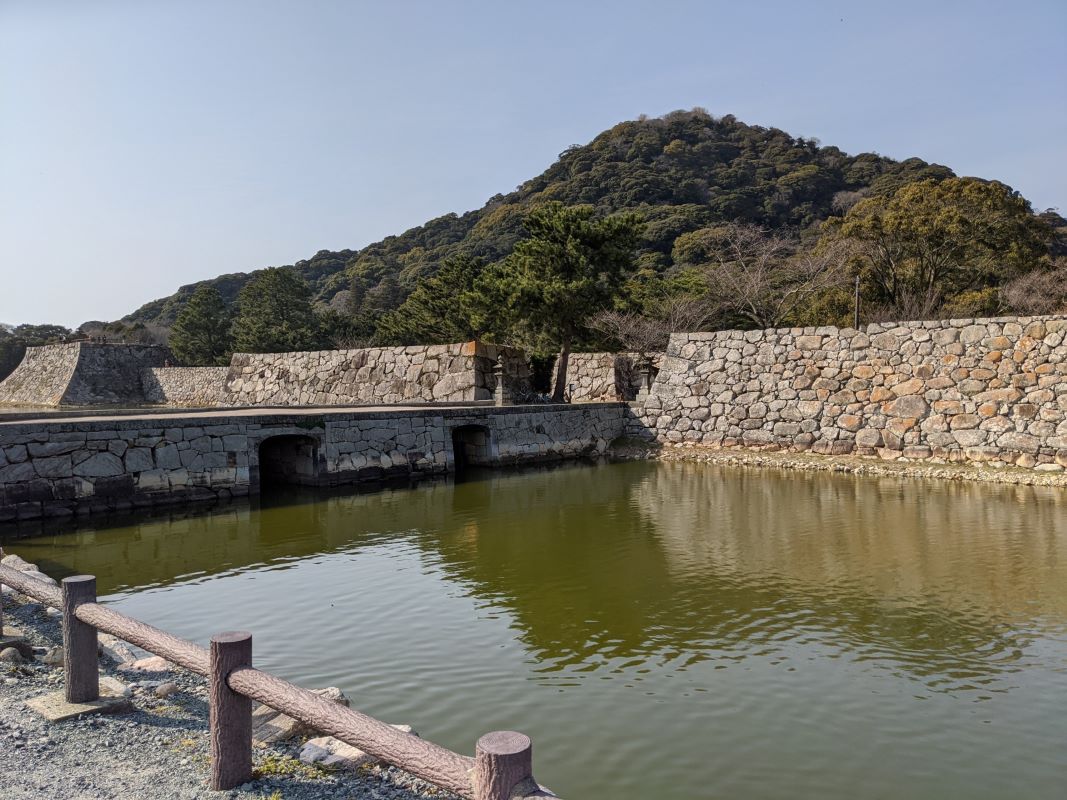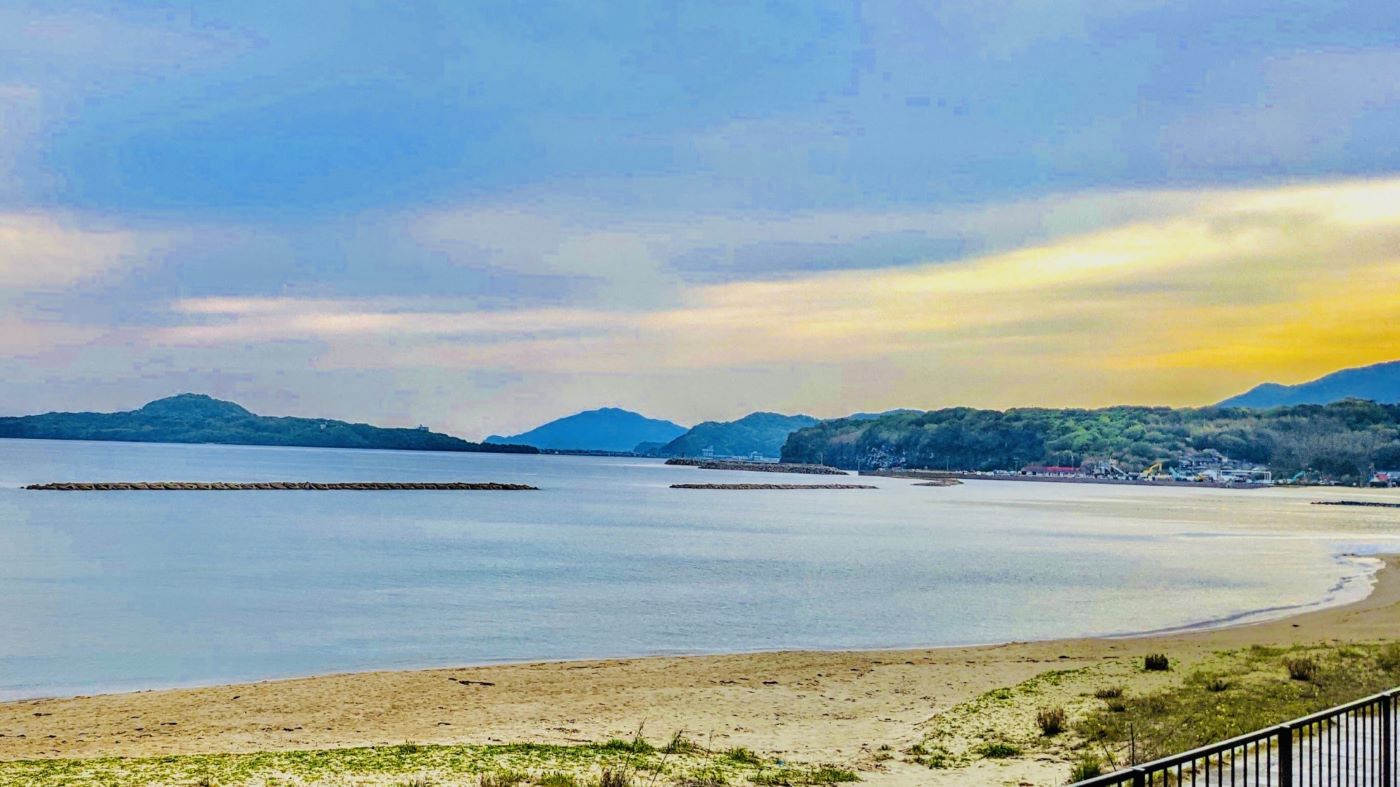Hagi was the seat of power for Mori Terumoto, who built his castle here in the early 1600s. The ruins of the castle still stand today, and visitors can walk among them, seeing the layout of the grounds ,(Shigetsu kouenn ) the moat, and the various gardens and buildings that remain inside.
Immediately outside the castle walls is the samurai town, which was originally built for Mori’s retainers and followers. This “ castle town ”, as well as other places throughout Hagi, has many buildings of historical interest, as people from Hagi played some of the most important roles in the Meiji Restoration of 1867.
Old residences and schools abound; there is a graveyard and many of the watchtowers and so on are still preserved.
Terumoto Mori built the castle and established the local government in 1604. It has flourished as a castle town for 260 years until the local government is transferred to Yamaguchi. The ruin of Hagi Castle, samurai residences and tradesmen’s houses in the Edo period are left now. Also as an original place of the Meiji Restoration, it produced famous persons such as Shoin Yoshida, Shinsaku Takasugi, Hirobumi Ito, etc. The nature of Mt. Kasa facing the Japan Sea and Hagi-wares and Hagi-glasses is one of the attractions in this town.
Essay
Shoin Shrine

Shoin Yoshida is worshipped here. Originally, a Shoshi (small shrine covered with plaster) was built in 1890 in the Sugiya premises (residence of Shoin’s parents), and Akamasuzuri (an ink slab which Shoin used regularly) and was dedicated as a Reidai (token of the spirit) to the Shoshi to worship his spirit. In 1907, the Miyazaki Hachiman shrine (located in the ruins of Hagi castle), which embodied Mori’s guardian deity, was dismantled and moved to Shoin Shrine to build a Honden (main hall) for the present.
Shokason Juku

The shrine was graded as a Kensha (prefectural shrine). The original Shoshi is now in Sessha Shomon-jinja Shrine, located next to the Shoin-jinja shrine to the north. This now honors Shoin’s students who studied in his school, Shokason Juku.
The Shokason Juku (designated as a national historical site), Shoin’s house where he was confined, and the Hagi Shoin Museum are in the compound of the Sessha Shomon shrine. Shoin’s testament “Isho Ryukonroku” that Shoin wrote before he was executed is displayed in the museum.
Horiuchi Preservation District Historic Buildings

The district called Horiuchi is situated in the Sannomaru area of Hagi Castle ruins. The district has approximately 77.3 hectares, 990 m (east-west) by 660 m (north-south). The clan offices such as Okuramoto (the place where the merchants come for their business, Okiya (the place where timber are stored), Shogungoyou yashiki (houses which Shogun use), Gozendokoro (the place to cook), and Okachidokoro (the place where Kachi samurais stay) were settled in this district in the period when the clan held governance.
Also, the Mori’s relatives and superior ranked feudatories, such as the Eitaigaro (first rank feudatories) and Yorigumi (second rank feudatories), lived in this area. The Monomi yagura (watch tower) of the Masuda residence (an Eidaigaro who was assigned 12,000 goku), the Nagayamon (terraced house front gate) of the Sufu (1,530 goku) residence, the Nagayamon of the Hanzawa (1,094 goku) residence, the Yashikimon (mansion front gate) of the Fukuhara residence (an Eidaigaro assigned 11,300 or more), and the Omotemon (front gate) and the main building of the Kuchiba (1,018 goku) residence are well preserved.
Natsumikan trees (Orange trees that bear in summer) were planted around these sites to save samurais from poverty after the Tokugawa Shogunate period ended. Altogether, the historical scenery of the district is very beautiful.
Hagi Castle Town

Hagi Castle Town has been designated as a national historical site. The town was originally constructed on a grid where many middle and lower-ranking samurai houses and merchant houses stood in rows. The street lines of the time still remain without change, and the town retains traces of its former appearance.
You can get a cup of green tea (served in a local Hagiyaki ceramic cup) in Mori’s old tea house, see the building where his retainers lived (which still has some of the original panels intact from the 1700s) and view the “dragon’s head” garden outside the teahouse.
The house of the Kikuya, a wealthy merchant family of the feudally-appointed supplier of commodities in Hagi, the birthplace of Shinsaku Takasugi, and the houses of Takayoshi Kido and Shusuke Aoki are preserved in the smaller alleys called Kikuya-yokocho, Iseya-yokocho, and Edoya-yokocho.
Along the streets are storehouses with Namako kabe (the walls covered with square tiles jointed with raised plaster), house gates, and clay fences.
Hagi Uragami Museum
This museum displays an excellent collection of Ukiyoe prints, oriental potteries and porcelains donated by Toshiro Uragami, a businessman who was born in Hagi. The museum houses about 4,800 ukiyoe prints including the pieces from the 6 great Japanese Ukiyoe artists, Hokusai Katsushika, Harunobu Suzuki, Kiyonaga Torii, Utamaro Kitagawa, Sharaku Toshusai, and Hiroshige Utagawa.
The Utagawa-school collection is the most remarkable among them. As for the ceramic collection, pieces from 3000 BC to the mid-17th century (spanning approximately 5,000 years) are stored. The excellent collection comprises Saito (Chinese ancient ceramics with colored patterns), Kosometsuke (porcelains made in Jingdezhen at the end of the Chinese Ming period), Ryokuyu (from the Chinese Han period), Karasansai (from the Chinese Tang period), and Kosometsuke (from the Han to Ming periods) and others are listed.
Hagi Yaki

Hagi is famous for its pottery, known as Hagi-yaki. This pottery traditionally was made with a chip broken from the base. While there are various stories about why this was so (the most prosaic one is that it made tying the cups easier during shipping), my favorite is the one that says that with the “flaw” in place, no ceramic piece could be given to anyone else as it was no longer perfect. This prevented people from overtly coveting the beautifully lacquered pieces. If you like to try your hand at making Hagi yaki, there are places to do so.
Kikugahama Beach

Near the castle is a long curving stretch of gorgeous beach. Protected by an isthmus and looking out over the Sea of Japan, the water has a placid and inviting aspect to it and local families make good use of it during the summer.
Hagi Glass Atelier
Located in Mt. Kasayama in the Koshiga-hama area of Hagi city, Hagi Glass Atelier manufactures local brand crystals using quartz basalt mined from Mt. Kasayama. This is also a place to research Hagi glassware. The features of Hagi crystal are its moss green color, its hardness and durability, and tolerance of heat. Visitors can see the production process.
Aiba River Preservation District for Historical Landscape
The Kawashima district where lower-ranked samurais were living is situated on the delta of land where the Abu river branches into the Hashimoto and the Matsumoto rivers. The Aiba river runs through the delta snaking 2.6 km.
The water from the Aiba river was available only for agriculture, households, and fire-fighting until 1744 when Munehiro Mori, the 6th lord of the clan, cut the channels for commercial use. Since boats could be used on the river channels, commodities such as wood fuel or charcoal were delivered through the channels.
The river had been called Oumizo, but people were unaware of calling this river the Aiba river because the regionally-run Aiba (a place to dye fabric with indigo) was settled by the river and the water became navy blue from Ai (indigo plant).
Along the Aiba river, the washing place called Hatoba and the arched stone bridge still remain and show signs of the past. The landscape of the Aiba riverside is one of the rare places to remind us of life as it was in Hagi castle town. The landscape has been appointed as a preserved historical area.
Climb Kasa-Yama: A dormant Volcano
Away from the city, on the isthmus, there is a dormant volcano. Although it is somewhat removed from the samurai town and castle (about a 15-minute ride by cab), it is worth the trip. On the summit is a scenic lookout that shows a beautiful view of the six low-lying islands that surround Hagi in the Sea of Japan. The volcano (Kasa-yama)also has a large amount of area that tourists can trek along, including some gardens and a descent into a crater from which one can see actual lava within the volcano. (This may be the only place in Asia where one can do this.)
There is another spot at the base of the volcano where you can stop and have some food in a cavern-like area. The grotto is kept cool even on the hottest summer days from air wafting up from underground and covered as it is with leafy trees and located next to a large pond(Myoujin-ike) – is a great place to relax after seeing the rest of the area.
